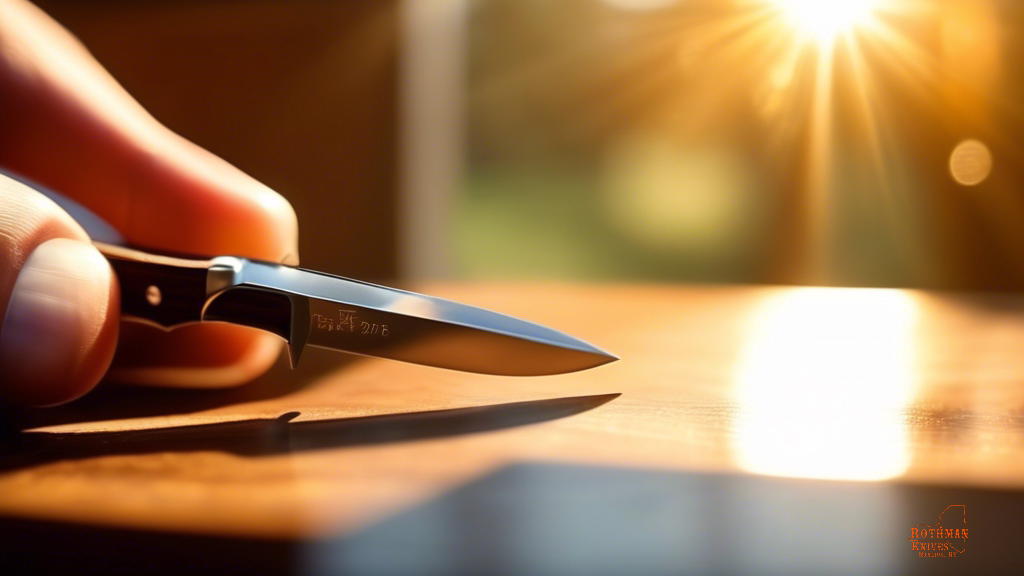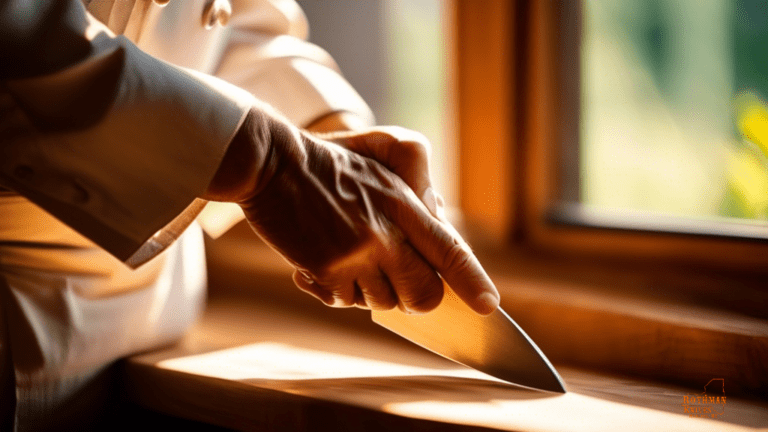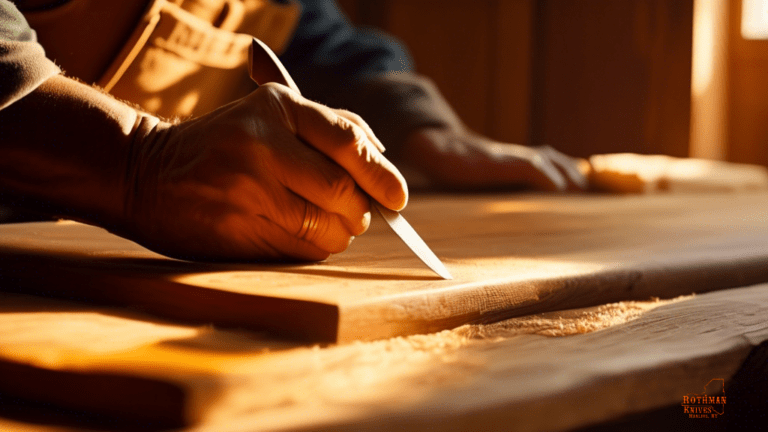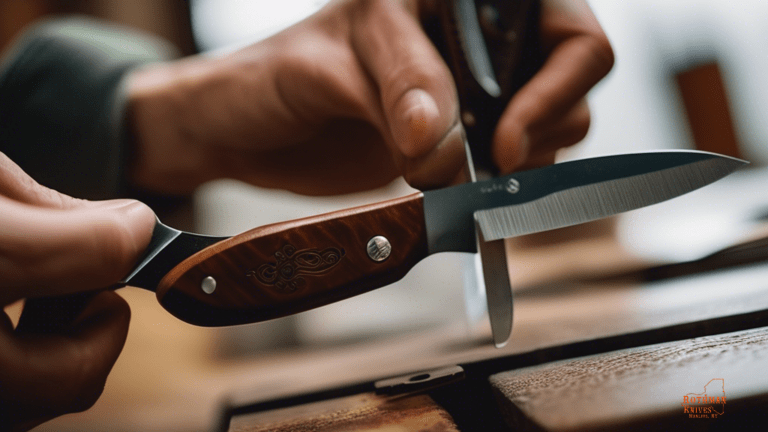Are you a fan of whittling and carving, looking to hone your skills with a pocket knife? It’s important to prioritize safety when using a whittling pocket knife to avoid accidents and injuries.
By following essential safety tips, you can enjoy your hobby while keeping yourself and others safe.
Choosing the right whittling pocket knife is the first step in ensuring a safe and enjoyable carving experience. Make sure to select a knife with a comfortable grip that fits well in your hand to prevent slipping and accidents.
Proper grip and hand placement are crucial when using a pocket knife, so take the time to familiarize yourself with the correct techniques to avoid cutting yourself. Remember, safety should always come first when it comes to whittling with a pocket knife.
Key Takeaways
- Prioritize safety to avoid accidents and injuries.
- Choose the right knife with a comfortable grip, proper size, and shape.
- Hold the knife firmly, position fingers correctly, and practice different grips.
- Use a cutting mat or surface with stability and grid lines for protection.
Choosing the Right Whittling Pocket Knife
Now, let’s talk about picking the perfect whittling pocket knife to ensure your carving experience is as smooth as possible.
When choosing a whittling pocket knife, it’s important to consider the blade material, size, and shape. Look for a high-quality stainless steel blade that will hold a sharp edge for precise carving.
A smaller blade size, around 2-3 inches, is ideal for detailed work, while a curved or straight blade shape can offer versatility in different carving techniques.
Consider the handle material as well, opting for a comfortable grip that allows for better control and less hand fatigue during long carving sessions.
Additionally, make sure to choose a knife that fits comfortably in your hand and feels balanced when held. This will prevent accidents and make carving more enjoyable.
Don’t forget to consider the locking mechanism of the knife to ensure safety while in use.
By selecting the right whittling pocket knife for your needs, you’ll set yourself up for success and create beautiful carvings with ease.
Proper Grip and Hand Placement
Proper grip and hand placement are crucial when handling a pocket knife for whittling. To ensure safety and precision in your craft, make sure to follow these tips:
- Hold the knife firmly: Grip the knife firmly but not too tightly, so you can maintain control over the blade without risking slipping.
- Position your fingers correctly: Keep your fingers away from the blade’s path to avoid accidental cuts or injuries.
- Practice your grip: Spend time practicing different grips to find what works best for you and allows for comfortable and safe whittling.
Remember, the way you hold your pocket knife can impact not only the quality of your work but also your safety. So, take the time to perfect your grip and hand placement to become a confident and skilled whittler.
Keeping Your Knife Sharp
To keep your blade sharp, regularly hone it with a sharpening stone or strop.
A sharp knife isn’t only safer to use, but it also makes your whittling experience more enjoyable and efficient.
By maintaining the sharpness of your knife, you’ll find that it glides effortlessly through wood, giving you cleaner cuts and more precise details in your projects.
Remember, a dull knife requires more force to cut, increasing the risk of slipping and potentially causing accidents.
By taking the time to sharpen your blade regularly, you’re not only prolonging the life of your knife but also ensuring that you can continue to create beautiful pieces with ease.
So, make it a habit to sharpen your knife before each whittling session, and you’ll see a significant improvement in your carving skills and overall safety.
Using a Cutting Mat or Surface
When carving with your knife on a cutting mat, make sure to apply steady pressure and maintain a strong grip to prevent any accidents. Using a cutting mat or surface not only protects your work area but also ensures a safer carving experience.
Here are some tips to make the most out of your cutting mat:
- Place a non-slip mat underneath your cutting mat for added stability.
- Use a cutting mat with grid lines for more precise cuts.
- Always cut away from your body to avoid injuries.
- Keep your cutting mat clean and free of debris for better visibility and control.
By following these simple tips, you can enjoy your whittling hobby while staying safe and creating beautiful pieces with your pocket knife. Remember, a little precaution goes a long way in ensuring a positive and accident-free carving experience.
Safety Precautions and Best Practices
Remembering to follow precautions and best practices is crucial for a safe and enjoyable whittling experience.
Always make sure to keep your fingers and hands away from the cutting edge of the knife to avoid accidental cuts. It’s also important to maintain a stable and comfortable grip on the knife, ensuring that you have full control over your movements.
By being mindful of your surroundings and focused on the task at hand, you can minimize the risk of injury and fully immerse yourself in the art of whittling.
In addition, make sure to keep your knife sharp at all times. A sharp blade requires less force to cut through wood, reducing the chances of slipping and causing accidental injuries.
When not in use, store your pocket knife in a protective sheath or case to prevent any accidental cuts when reaching for it.
By following these safety precautions and best practices, you can fully enjoy the art of whittling without worrying about potential risks.
Frequently Asked Questions
Can whittling pocket knives be used for tasks other than whittling?
Curious minds often wonder if whittling pocket knives have other uses besides whittling. In reality, these versatile tools can also be handy for tasks like carving, cutting, and even small repairs on the go.
How often should I clean and oil my whittling pocket knife?
To keep your whittling pocket knife in top shape, clean and oil it every 1-2 months. Regular maintenance will prevent rust, make it easier to use, and ensure your knife lasts a long time.
Are there any specific types of wood that are better for whittling than others?
When it comes to whittling, basswood is a popular choice due to its softness and ease of carving. Did you know that basswood is commonly used for making wooden objects like carvings and sculptures?
Can children safely use whittling pocket knives under adult supervision?
Yes, children can safely use whittling pocket knives under adult supervision. It’s a great way for them to learn a new skill while being guided by someone experienced. Just make sure to prioritize safety at all times.
Are there any specialized tools or accessories that can enhance the whittling experience with a pocket knife?
To enhance your whittling experience with a pocket knife, consider using specialized tools like a sharpening stone, carving gloves, and a carving bench. These accessories can make your carving projects safer and more enjoyable.
Last Updated: July 15, 2024
Verified and Approved by:

Mike Rothman
Founder of Rothman Knives
Like This Article?
Share with your friends
Table of Contents
Latest Articles
Keep Reading
-
Proper Care And Cleaning For Knife Handles
Discover the best way to maintain your knife handles’ appearance with our expert care and cleaning guide. Say goodbye to dull handles and keep them looking sharp for longer! Click here to learn more.
-
The Best Whittling Knife For Your Creative Projects
Unleash your creativity with the best whittling knife for your projects! Find precision and inspiration in every carve. Click now to discover the perfect tool for your next masterpiece.
-
Knife Maintenance Workshop: Learn How To Properly Care For Multi-tool Pocket Knives
Master the art of caring for your multi-tool pocket knives at our Knife Maintenance Workshop. Keep your knives sharp and ready for any task with expert guidance. Join us now!




